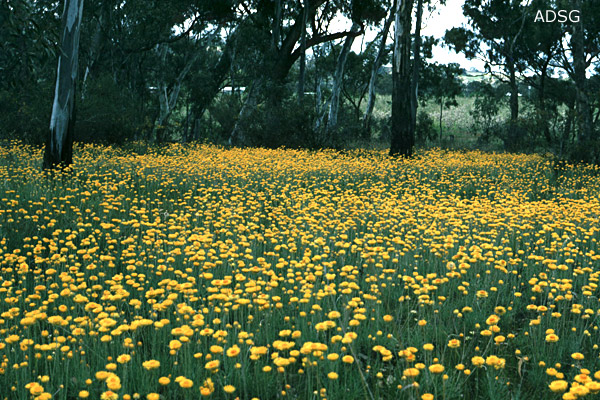General Description:
Leucochrysum is a small genus of six species all of which were formerly classified in the genus Helipterum. Leucochrysum albicans was previously known as Helipterum albicans.
Leucochrysum albicans is an erect perennial or annual plant up to 0.3 metres high. Two subspecies are recognised; ssp.albicans and ssp.tricolor. L.albicans ssp tricolor is known from three separate areas in Tasmania, Victoria and south-eastern NSW and ACT. It has white bracts surrounding the yellow central cluster of small flowers. In contrast, ssp. albicans has yellow bracts.
The narrow, linear leaves of L.albicans are greyish-green and form a grass-like clump of foliage. The flower heads are seen mainly during spring and summer and are 25 to 40 mm in diameter and occur singly at the ends of slender stems.
Subspecies tricolor is not often seen in cultivation. Subspecies albicans is, however, a popular species for growing in temperate areas where it can be a colourful feature for sites in part or full sun and in well drained soils. It is ideal for filling in bare areas of the garden.
Propagation from seed can be carried out without any pretreatment. Cuttings of hardened, current season’s growth usually strike without difficulty.
* EPBC Act = Environment Protection and Biodiversity Conservation Act 1999;
ROTAP = Rare or Threatened Australian Plants (Briggs and Leigh, 1988)
For further information refer the Australian Plants at Risk page

Leucochrysum albicans ssp. albicans in habitat
Photo: Australian Daisy Study Group

Leucochrysum albicans ssp. albicans
Photo: Australian Daisy Study Group

Leucochrysum albicans ssp. tricolor
Photo: Murray Fagg – Australian National Botanic Gardens
Other Native Plant Profiles
 Australian Native Plants Society (Australia)
Australian Native Plants Society (Australia)













